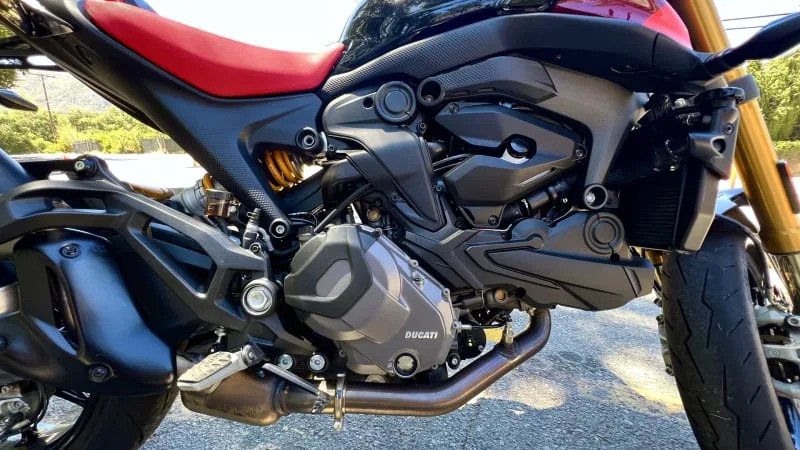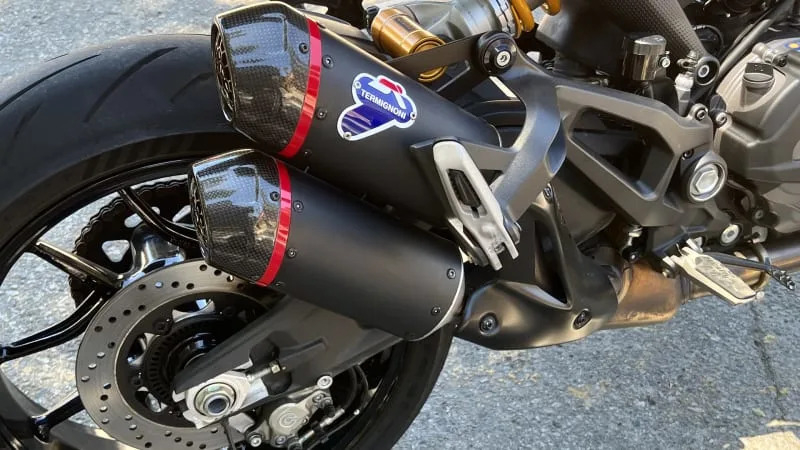In 1993 Ducati took a gamble on a new class of motorcycles. Dubbed naked bikes, they take sportbike engineering and strip it of most of the bodywork, exposing its mechanical glory for all to see. Ducati called it the Monster and similar to how the Cayenne
Now 30 years later, the Monster is alive and well with a full redesign that took place for the 2021 model year. This new generation has all of the muscular heft of its predecessors, but sadly its iconic trellis frame has been eliminated in favor of a more anonymous cast alloy subframe that blends in with the engine.
That engine is a 937-cc 90-degree V-twin that’s good for 111 horsepower and 69 pound-feet of torque. While those figures aren’t so impressive when compared to passenger cars, consider this Monster SP’s curb weight of 410 pounds with a full tank. That equates to a weight-to-power ratio of 3.7:1. That’s better than a Porsche 918 or Pagani Huayra, yet the bike has an MSRP of only $15,695, which is less than a Nissan Versa. Bang for the buck, indeed.
This Monster SP is a step up from the entry-level Monster Plus, featuring Öhlins dampers, lighter Brembo brakes, a lightweight lithium-ion battery, a steering damper, sticky Diablo Rosso IV tires and a Termignoni carbon fiber exhaust. These upgrades increase the SP’s cost by $2,700 over the Monster Plus.
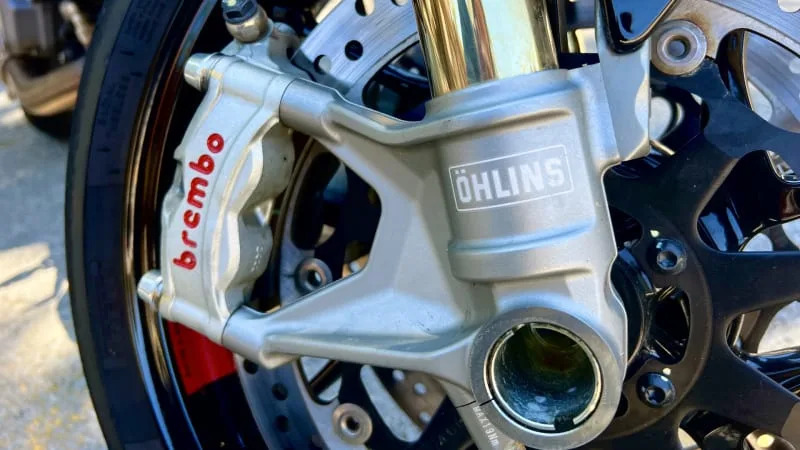

Swinging a leg over the Monster SP, my 32-inch-inseam legs are long enough to have both feet on the ground, though my heels only touch if I stand straight up. It’s a solid enough stance that I wouldn’t bother getting the lower seat accessory that drops riders by 1.2 inches. The entry-level Monster Plus rides almost an inch lower due to it lacking the Öhlins damper upgrade, and can even be had with a suspension that lowers the ride height by yet another inch. So, it’ll be worse, but smaller people will be more likely to fit on it.
The wide dirtbike-like bars are a departure from the narrow handles found on sportbikes and their placement higher and further aft means you sit more upright. The footpegs are also lower and pushed forward to provide a more comfortable riding position than a typical sportbike.
With a downward flick of the thumb on the ignition switch, the Monster’s V-twin groggily turns over. The weak startup made me think that perhaps the battery was low, but it started every time with a mechanical clatter and underlying baritone from the twin exhaust pipes. The idle is rough and lumpy, with a rather noisy rattle that sounds more like a portable air compressor than a motorcycle. That may seem critical, but for seasoned riders, that clatter is a portent of good things to come in the same way an over-cammed small-block Chevy
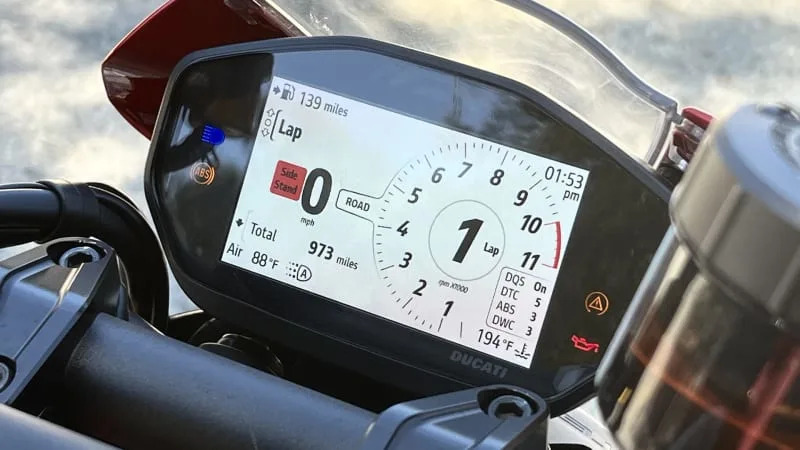
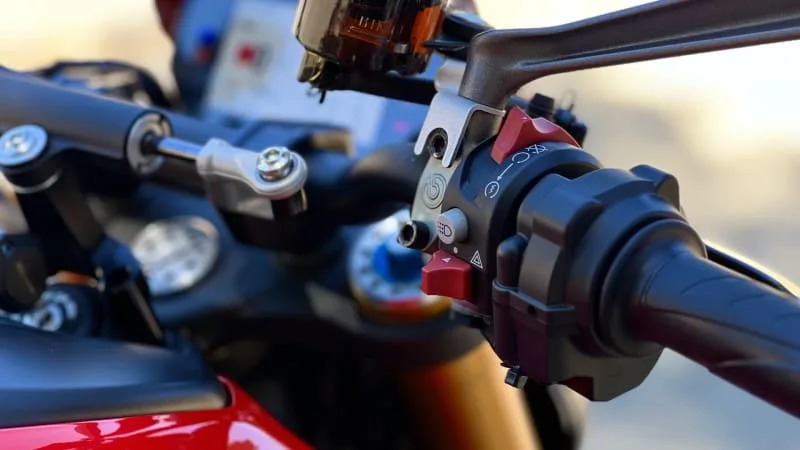
Rolling down the boulevard on my way to the coast, the Monster is well-mannered and stable. The clutch lever has an appropriate amount of effort and with a stomp of the left foot, the transmission clunks into first gear. Clutch engagement is easy, with a wide friction zone to ease the bike forward smoothly. The new Monsters come with Ducati’s Quick Shift system that eliminates the need to pull the clutch in with each shift after the initial first gear engagement. You just lift your foot to pop the shifter into the next gear. That’s nothing new for experienced riders who often feather the throttle for an instant to unload the gear cogs before kicking into the next gear. It’s somewhat similar to rev-matching in cars, making operation easier for novices.
Weaving between cars (still legal in California), the Monster’s wide bars keep you from splitting through narrower gaps, but most drivers in L.A. are considerate enough to give you room if they see you coming. The throttle is very manageable with an approachable amount of power that won’t try to buck you off if you’re careless. When you want power, it’s there in an instant with torque that won’t scare you.
